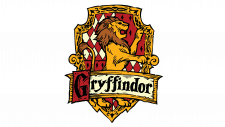Sanrio Logo
Sanrio, the Japanese company celebrated for Hello Kitty, has evolved into a global lifestyle brand. Currently, it designs and licenses an array of products featuring its original characters, catering to a diverse demographic. Sanrio’s primary markets include Asia, Europe, and the Americas, with a strong presence in fashion, entertainment, and merchandising. Owned by Shintaro Tsuji, its approach blends traditional cuteness with modern, innovative design, continuously attracting new generations while maintaining a loyal fanbase.
Meaning and history
Sanrio’s rich history is a captivating tale of imagination and global triumph. It all began in 1960 when Shintaro Tsuji founded the company in Japan, initially dealing in silk scarves. However, Tsuji’s visionary spirit recognized the potential of character licensing, leading to the birth of the iconic “Hello Kitty” in 1974. This feline sensation swiftly became a cultural phenomenon, securing its place as one of the most universally recognized characters.
As the 1980s dawned, Sanrio expanded its enchanting character roster to include beloved figures like My Melody, Keroppi, and Badtz-Maru. Diversifying into animated series and an array of merchandise, Sanrio characters found their way into hearts and homes across the globe.
Sanrio’s international presence blossomed throughout the 1980s and 1990s. The company established retail outlets, formed strategic alliances, and bridged cultures in North America, Europe, and Asia. Hello Kitty, with her distinctive charm, embodied the essence of kawaii (cuteness) culture.
While Shintaro Tsuji remained the creative genius behind Sanrio for many years, the company underwent a transformation in leadership. In 1999, Shintaro Tsuji handed over the reins to his son, Kunihiko Tsuji, marking a generational shift while preserving the core commitment to character-driven merchandise and entertainment.
In recent times, Sanrio has embraced the digital era, leveraging social media and collaborating with trending brands to remain at the forefront of pop culture. Sanrio’s endearing characters have maintained their allure, enchanting audiences through animated series, theme parks, and even a Hello Kitty-themed bullet train in Japan.
Sanrio’s enduring legacy is a testament to its ability to adapt, innovate, and remain attuned to evolving consumer preferences. From its origins as a silk scarf enterprise to its ascendancy as a global authority in character licensing, Sanrio continues to bring delight to people worldwide, crafting stories that span generations and transcend borders.
What is Sanrio?
Sanrio is a Japanese company renowned globally for its iconic character Hello Kitty. Founded in 1960, Sanrio specializes in creating ‘kawaii’ (cute) products and characters, spanning a wide range of items from backpacks and stationery to clothing and toys, aimed at bringing joy to people of all ages.
1960 – 1970
This imaginative logo features a playful figure atop the letter “W,” reminiscent of a harlequin playing a flute, invoking a sense of whimsy and merriment. Each letter boasts elaborate serifs that add a touch of elegance and tradition, contrasting with the figure’s carefree spirit. The figure’s silhouette, with its exaggerated gestures and lifted leg, injects a narrative element, as if it is serenading the viewer into a world of fantasy and charm. The use of a single, vibrant shade of blue unites the elements, suggesting both creativity and reliability, while the character’s impish charm introduces a distinctive identity to the brand, hinting at a company that doesn’t take itself too seriously.
1960 – 1970
The logo in view spells out “SAN-RIO” in a bold, fluid script, with characters that seem to be in playful motion, suggesting a brand that’s dynamic and friendly. The letters are designed with rounded ends and soft curves, imparting a welcoming, approachable vibe. This version of the logo has dropped the previous logo’s harlequin-like figure, moving towards a cleaner and more straightforward presentation. However, it retains a touch of playfulness, especially in the elongated tail of the “R”, which seems to echo the cheerfulness of the brand. The deep blue color remains, providing a sense of continuity and reliability. Overall, this logo iteration represents a maturation of the brand’s image, focusing on clarity while honoring its whimsical roots.
1970 – 1973
The logo reads “San-Rio,” rendered in a flowing, cursive script that exudes elegance and fluidity. The “S” swirls with a flourish, leading the eye to the well-balanced “a” and into the undulating waves of the “n,” which playfully dips below the baseline. The hyphen provides a visual break before the “R,” which stands with a confident, slightly extended leg. The “i” is dotted with a modest circle, and the “o” completes the name with a smooth, closing curve. The black color gives a timeless feel, versatile for various applications.
Comparing it to previous iterations, this logo has shed the playful characters and serif detailing for a more sophisticated and streamlined appearance. There’s a transition from a fun, illustrative style to a more uniform and elegant script, indicating a shift in the brand’s image towards a more mature and refined aesthetic. This change could reflect an evolution in the company’s target market or an expansion of its product lines to include more upscale items.
1973 – 1997
The logo showcases “Sanrio” in a buoyant, cursive script, crowned with an emblem where a heart forms the centerpiece of an infinite loop. The heart, a universal symbol of love, sits at the core, implying the brand’s commitment to spreading joy and affection. The looping lines that surround it suggest continuity and connection, evoking a sense of endless creativity and community.
In contrast to the previous logo’s purely typographic style, this design introduces a graphic element that encapsulates the essence of the brand beyond text. The script is playful and less formal, with the “S” and “R” especially exhibiting a whimsical flair. The color remains a consistent blue, maintaining brand recognition while signaling trust and dependability. This logo thus marks a blend of tradition with a refreshed, design-centric approach, aiming to resonate emotionally with the audience.
1997 – Today
“Sanrio” is written in a playful cursive, the “S” looping to warmly welcome viewers. Letters wave rhythmically, ending in a heart that highlights Sanrio’s warm, friendly ethos. The heart melds into the letters, unlike the previous separate emblem, symbolizing a text-image unity that’s core to Sanrio’s loving brand.
Shifting from the prior logo’s detached heart, the new design integrates it, deepening the love theme. The lighter blue hue adds a soft, inviting touch. The refined logo underscores Sanrio’s joyful, affectionate spirit, ensuring it sticks in minds and hearts. This streamlined look reflects modernity while retaining the brand’s cherished character.
















